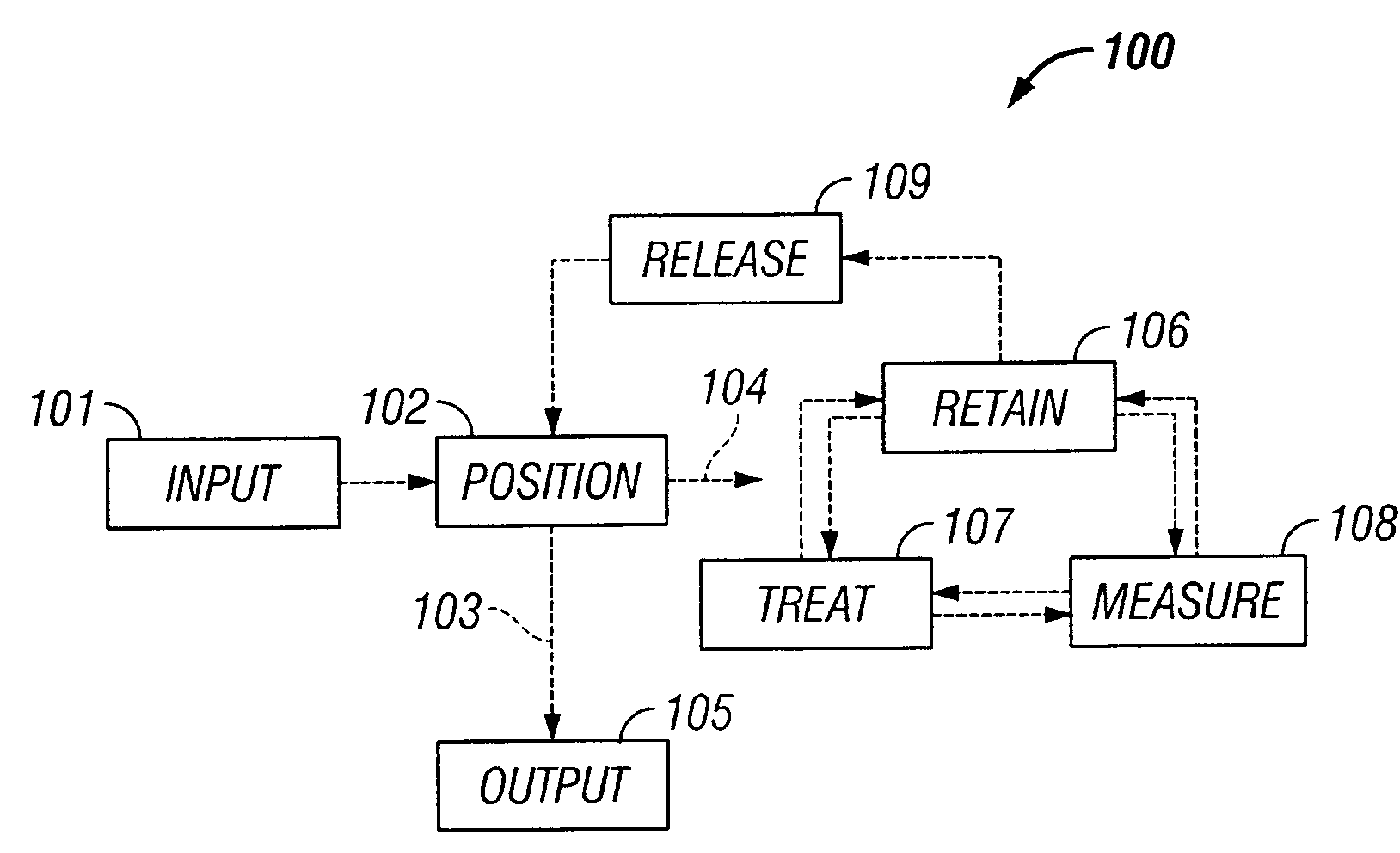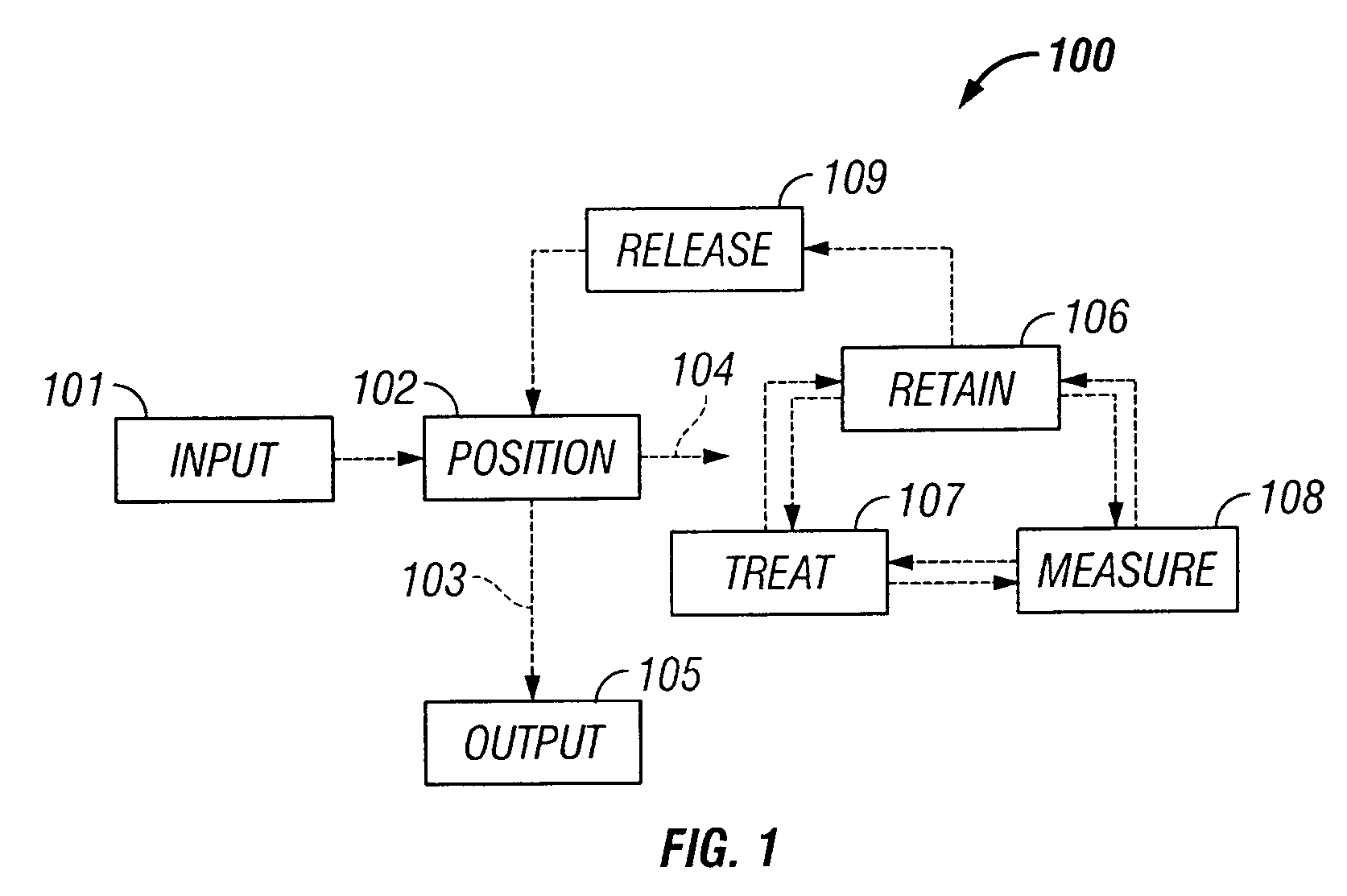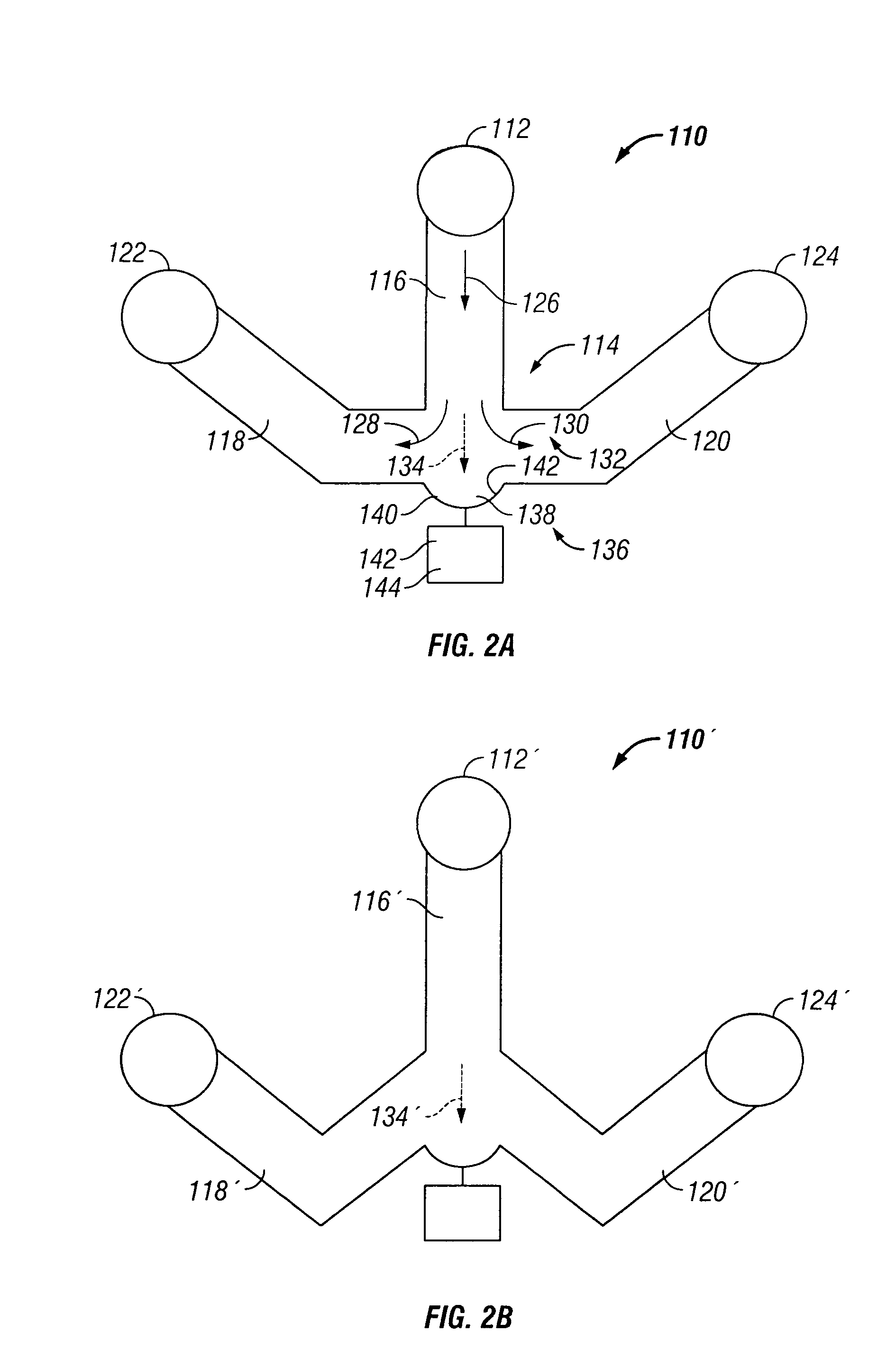Microfluidic particle-analysis systems
a microfluidic particle and analysis system technology, applied in the field of microfluidic particle analysis systems for the manipulation and/or detection of particles, can solve the problems of small assay volume in high-density microtiter plates, a number of shortcomings, and the need for new approaches
- Summary
- Abstract
- Description
- Claims
- Application Information
AI Technical Summary
Benefits of technology
Problems solved by technology
Method used
Image
Examples
example 1
Cell Positioning and Retention Mechanisms
[0335]This example describes microfluidic systems for positioning and / or retaining single particles or groups of particles, based, at least in part, on divergent flow paths; see FIGS. 2-4.
[0336]Background
[0337]There are many cell analyses that benefit from or require the precise positioning and retention of a single cell or a small group of cells. In particular, positioned and retained cells may be treated and observed in real time. However, currently available mechanisms for positioning and retaining cells are either expensive and labor intensive, or imprecise and deleterious to cells. For example, micromanipulators enable a user to select and precisely position a single cell. However, micromanipulators are expensive, and require that users observe the cell throughout the micromanipulation. Hence, the user can only position one cell at a time. At the other extreme, filters offer a crude, but much cheaper and faster mechanism for positioning ...
example 2
Microfluidic Systems for Trapping and Perfusing Particles
[0348]This example describes microfluidic systems that position and retain single particles or sets of particles, and allow rapid, precise perfusion of the retained particles or sets of particles with reagents; see FIGS. 5-11C.
[0349]Background
[0350]Many cell studies benefit from analysis of a population of cells. The population may provide discrete information from individual cells of the population and averaged information from the entire population. Accordingly, a population of cells may allow concurrent analysis of distinct types of cells when the population is heterogeneous, or a range of cell phenotypes or responses when the population is homogeneous or clonal. Therefore, studies of cells in a microfluidic environment would benefit from microfluidic systems that automatically position and / or retain a set of cells at a preselected site on a microfluidic chip. Furthermore, these studies would benefit from mechanisms that al...
example 3
Microfluidic Systems for Parallel Retention and / or Treatment of
[0388]Particles
[0389]This example describes microfluidic mechanisms and systems that position a plurality of particles and / or reagents at discrete transverse regions and flow paths within a channel or flow stream; see FIGS. 12-13K. This positioning may allow parallel retention of distinct particles at adjacent, but distinct, sites and / or parallel exposure of particles at these sites to distinct reagents.
[0390]Background
[0391]Biological analyses benefit from a capability to directly compare the phenotypes of two or more cells or groups of cells, under similar or distinct treatment regimens. However, in the macroscopic world, such cells or group of cells often are treated at distinct, relatively widely spaced sites, such as different tissue culture dishes or wells of a microtiter plate, potentially exposing the cells to undesired differences in treatment conditions. Accordingly, such analyses may need to be averaged over m...
PUM
| Property | Measurement | Unit |
|---|---|---|
| volumes | aaaaa | aaaaa |
| volumes | aaaaa | aaaaa |
| volumes | aaaaa | aaaaa |
Abstract
Description
Claims
Application Information
 Login to View More
Login to View More - R&D
- Intellectual Property
- Life Sciences
- Materials
- Tech Scout
- Unparalleled Data Quality
- Higher Quality Content
- 60% Fewer Hallucinations
Browse by: Latest US Patents, China's latest patents, Technical Efficacy Thesaurus, Application Domain, Technology Topic, Popular Technical Reports.
© 2025 PatSnap. All rights reserved.Legal|Privacy policy|Modern Slavery Act Transparency Statement|Sitemap|About US| Contact US: help@patsnap.com



